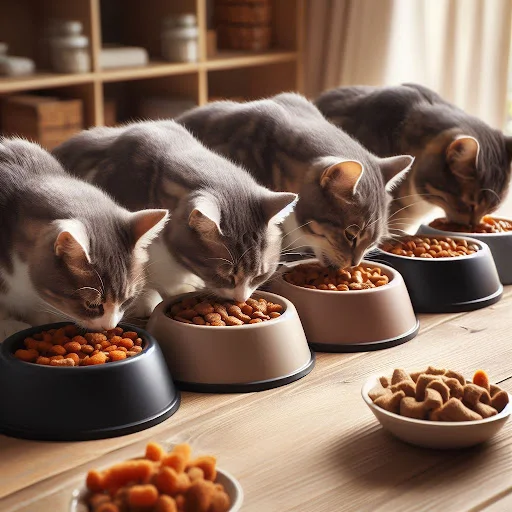The Whisker-Fatigue Connection: Unraveling the Impact of Food Bowl Size on Your Cat's Comfort
The Whisker-Fatigue Connection: Unraveling the Impact of Food Bowl Size on Your Cat's Comfort
Introduction:
Whisker fatigue may not be a term commonly associated with our feline friends, but it plays a significant role in their overall well-being. Cats use their sensitive whiskers not only for navigation but also to gauge their surroundings and, interestingly, during mealtime. In this blog post, we delve into the relationship between the size of a cat's food bowl and whisker fatigue.
Understanding Whisker Fatigue:
A cat's whiskers are highly sensitive touch receptors known as vibrissae. These long, stiff hairs are deeply embedded in the cat's body and are connected to the nervous system. Whiskers play a crucial role in helping cats navigate in low-light environments, detect changes in air currents, and even measure the width of openings.
During mealtime, a cat's whiskers come into play as well. The act of eating involves a complex interplay of sensory information, and a cat's whiskers are essential for gauging the depth of the food bowl and the position of the food within it. However, when a cat's whiskers are constantly pressed against the sides of a narrow food bowl, it can lead to whisker fatigue.
The Impact of Food Bowl Size:
Imagine if every time you reached for your plate, your fingertips grazed the sides of the dish. Uncomfortable, right? Cats experience a similar discomfort when their sensitive whiskers touch the edges of a too-small food bowl. This phenomenon, known as whisker stress or fatigue, can cause anxiety during mealtime and lead to aversions to certain bowls.
Selecting the Right Food Bowl:
Choosing an appropriately sized food bowl is crucial to ensuring your cat's comfort during meals. Opt for wider, shallower bowls that allow your cat to eat without their whiskers touching the sides. Stainless steel or ceramic bowls are ideal choices, as they are easy to clean and do not retain odors that might deter your cat from eating.
Observing Your Cat:
Pay attention to your cat's behavior during meals. If you notice signs of reluctance, such as pawing at the food or leaving food uneaten, it might be worth reconsidering the size and shape of the food bowl. Every cat is unique, so experimentation with different bowls can help you find the perfect fit for your feline friend.
Conclusion:
Whisker fatigue is a real concern for cats, and the size of their food bowl plays a crucial role in mitigating this discomfort. By choosing a bowl that accommodates their sensitive whiskers, you can enhance your cat's mealtime experience and contribute to their overall happiness and well-being. Remember, a happy whisker makes for a contented cat!
thanks
see you again.




Comments
Post a Comment